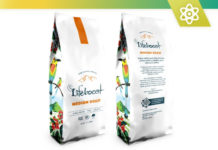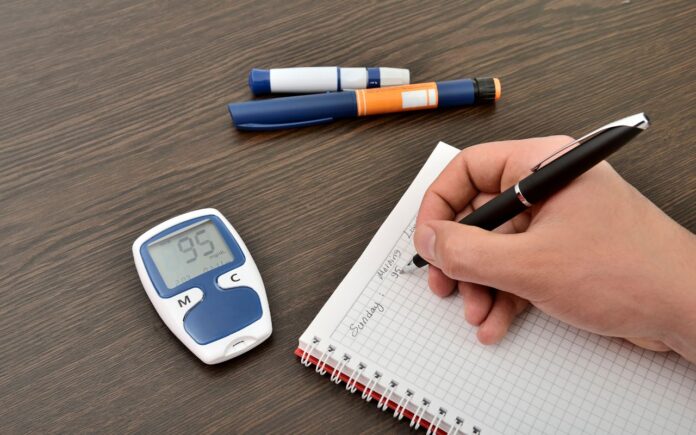Continuous Glucose Monitors (CGMs) have revolutionized diabetes management, offering a more dynamic way to monitor blood glucose levels than traditional fingerstick methods. These devices, which provide real-time glucose readings, have transformed the lives of many individuals managing diabetes, whether it's Type 1, Type 2, or gestational diabetes. Given the complexities of managing diabetes, CGMs present a significant breakthrough, improving quality of life and clinical outcomes.
The Evolution of Diabetes Monitoring
Traditionally, diabetes management relied heavily on periodic fingerstick blood tests to monitor glucose levels. This method, while effective to some extent, has its limitations. It provides only a snapshot of glucose levels at a specific time and requires multiple daily pricks, which can be inconvenient and painful. The advent of CGMs has addressed many of these limitations by offering continuous data, which translates into better-informed treatment decisions.
A CGM system typically comprises a tiny sensor inserted under the skin, usually on the abdomen or arm, continuously measuring glucose levels in the interstitial fluid. This data is then wirelessly transmitted to a receiver or a smartphone app, providing real-time insights into glucose trends and patterns. This continuous flow of information helps users and their healthcare providers make timely treatment plan adjustments, potentially preventing acute complications such as hypo- or hyperglycemia.
Benefits of Continuous Glucose Monitoring
One of the most significant advantages of CGMs is the ability to observe glucose trends over time. This outstrips the episodic data obtained through fingerstick testing. By seeing how glucose levels fluctuate daily and at night, users can identify patterns and triggers that influence their diabetes control, leading to more timely and targeted interventions.
Improved Glycemic Control
CGMs allow for more stringent glycemic control by providing high and low blood glucose levels alerts. This feature is especially beneficial for those who experience hypoglycemia unawareness, a condition in which the individual does not feel the symptoms of low blood sugar. By alerting the user before glucose levels become dangerously low, CGMs reduce the risk of severe hypoglycemic events, which can be life-threatening.
Enhanced Quality of Life
For many people with diabetes, the constant need to perform fingerstick tests can be a significant burden. CGMs alleviate this by reducing the frequency of fingerstick tests required. Some advanced systems may even eliminate the need for routine fingerstick calibration. The convenience and peace of mind that come with continuous monitoring significantly enhance the quality of life, allowing individuals to engage more freely in daily activities without constant interruption.
Data-Driven Decision Making
The vast amount of data provided by CGMs can be shared with healthcare providers, enabling more precise adjustments to diabetes management plans. This can be particularly beneficial during critical periods, such as illness or routine changes, where blood glucose levels are more likely to fluctuate. The data can also be used to customize meal planning, exercise routines, and medication dosing, making diabetes management a more personalized and practical endeavor.
Positive Psychological Impact
The psychological burden of managing diabetes cannot be overstated. Many individuals experience anxiety about their glucose levels and the potential complications of poor management. CGMs can reduce this anxiety by providing a more consistent and reliable method of monitoring. Knowing that they have a tool to alert them to any issues can help individuals feel more in control of their condition, improving their mental health and well-being.
Continuous Monitoring as a Preventative Tool
CGMs are not just reactive tools; they also serve a preventative function. By identifying trends and potential issues before they become severe, CGMs enable proactive management. This capability is precious in preventing long-term diabetes complications such as cardiovascular disease, neuropathy, and kidney damage. Continuous monitoring allows for immediate corrective actions, reducing the risk of prolonged hyperglycemia or hypoglycemia that can lead to these complications.
Potential Barriers and Solutions
While CGMs offer many benefits, there are also some barriers to their widespread adoption. Understanding these challenges and exploring potential solutions is crucial for maximizing their impact on diabetes management.
Discomfort and Skin Irritation
One common concern is the discomfort associated with sensor insertion. Although most users report mild to no pain when using auto-applicators, some may still find the initial insertion uncomfortable. Another issue is skin irritation caused by the adhesive that keeps the sensors in place. To mitigate these problems, manufacturers are continually improving the design of both sensors and adhesives. Users can also explore different brands and models to find the best fit for their skin type and personal comfort.
Signal Interference
CGMs rely on wireless communication between the sensor, transmitter, and receiver. Signal loss can lead to gaps in data, which may be problematic for individuals who need consistent monitoring. Technological advancements are addressing these issues by improving the reliability and range of wireless signals. Moreover, the vast amount of data collected by CGMs far exceeds what is possible with traditional methods, even with occasional signal disruptions.
Cost and Insurance Coverage
The cost of CGM systems can be prohibitive, especially for those without comprehensive insurance coverage. However, many insurance companies are beginning to recognize the long-term benefits of CGMs, which can lead to better health outcomes and reduced healthcare costs. As a result, more insurance plans are starting to cover CGMs, and financial assistance programs are available for those who qualify. It's essential to check with your insurance provider to understand your coverage options.
Data Overload
The volume of data provided by CGMs can be overwhelming for individuals accustomed to traditional glucose monitoring methods. Interpreting this data requires some initial learning and adjustment. Many CGM systems come with educational resources and support from healthcare providers to ease this transition. A gradual approach to understanding and utilizing CGM data can help users feel more comfortable and confident in their diabetes management.
The Future of Continuous Glucose Monitoring
Diabetes technology is rapidly evolving, and the future of CGMs looks promising. Innovations in sensor technology, data analytics, and integration with other medical devices are paving the way for even more advanced CGM systems.
Integration with Insulin Pumps
One exciting development is the integration of CGMs with insulin pumps to create closed-loop systems, also known as artificial pancreas systems. These systems automatically adjust insulin delivery based on real-time glucose readings, significantly reducing the burden of constant monitoring and manual adjustments. This integration can lead to improved glycemic control and a reduced risk of both hypo- and hyperglycemia.
Enhanced Accuracy and Reliability
Continued research and development are focused on improving the accuracy and reliability of CGM systems. Advances in sensor technology, such as developing longer-lasting sensors requiring less frequent replacement, make CGMs more user-friendly. These improvements minimize the potential for errors and enhance the overall effectiveness of continuous glucose monitoring.
Broader Applications
While CGMs are primarily used by individuals with diabetes, there is potential for broader applications. For example, athletes and fitness enthusiasts are beginning to use CGMs to optimize their performance by monitoring glucose levels during training and competitions. Additionally, individuals with prediabetes or those at risk of developing diabetes may use CGMs as a preventative tool to monitor their glucose levels and make lifestyle adjustments before developing full-blown diabetes.
Expanding Accessibility
As technology advances and costs decrease, CGMs will likely become more accessible to a broader population. Efforts are underway to develop more affordable CGM systems that can be used in various healthcare settings, including low-resource environments. Expanding access to CGMs can significantly impact global diabetes management and improve health outcomes for millions of people.
Conclusion
Continuous Glucose Monitors have undeniably transformed diabetes management, offering a more comprehensive and convenient way to monitor blood glucose levels. By providing real-time data, improving glycemic control, and enhancing the quality of life, CGMs have become an invaluable tool for individuals managing diabetes. Despite some challenges, technological advancements continually address these barriers, making CGMs more accessible and practical.
The future of CGMs is bright, with ongoing innovations promising even more advanced systems that can further improve diabetes management. As more people adopt CGMs and integrate them into their daily lives, the potential for better health outcomes and a higher quality of life for individuals with diabetes becomes increasingly attainable. For those considering transitioning to a CGM system, the benefits far outweigh the potential drawbacks, making it a worthy investment in their health and well-being.
To learn more about the benefits and challenges of CGMs, visit Aptiva Medical and the London Diabetes Centre. These resources provide comprehensive information on CGM systems and can help you make informed decisions about your diabetes management.













![Bowflex Max Total: 2024 Fitness Workout Exercise Machine [Review] Bowflex Max Total: 2020 Equipment Review For Complete Upper and Lower Body Workout](https://www.advancedliving.com/wp-content/uploads/2019/12/Bowflex-Max-Total-218x150.jpg)


